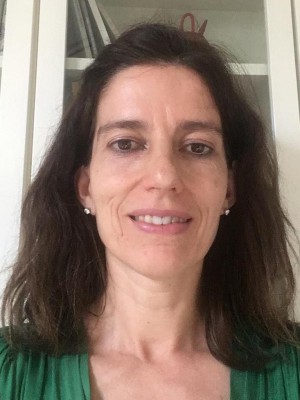abstract
Our reliance on synthetic polymers (plastics) is causing immeasurable damage to the environment. Better alternatives are actively being sought-after, such as biodegradable polyesters obtained by enzymatic synthesis. Here we compare in detail the catalytic mechanisms for poly(caprolactone) synthesis by the enzymesArchaeoglobus fulgiduscarboxylesterase (AfEST) andCandida antarcticalipase B (CalB) using Quantum Mechanics/Molecular Mechanics Molecular Dynamics simulations. In the ring-opening step (rate-limiting) the significantly higher free energy barrier found for AfEST is a consequence of the larger distance between the histidine-aspartate pair and the oxygen of the lactone, and a shorter distance to the serine nucleophile, favouring the reverse reaction towards the initial reactants. Our results give important insights towards the design of enzymatic variants which combine high activity and high thermostability in the synthesis of poly(caprolactone), which due to its bioresorbability is of great importance for biomedical applications.
keywords
RING-OPENING POLYMERIZATION; ANTARCTICA LIPASE-B; THERMOPHILIC ESTERASE; ALIPHATIC POLYESTERS; CRYSTAL-STRUCTURE; LACTONES; SEQUENCE; FORMS
subject category
Chemistry
authors
Pedro R. Figueiredo, Beatriz C. Almeida, Daniel F. A. R. Dourado, Andreia F. Sousa, Armando J. D. Silvestre and Alexandra T. P. Carvalho
our authors
Projects
Rational design of a thermostable esterase for the production of highvalue bioplastics for biomedical applications (ThermoEst)
CICECO - Aveiro Institute of Materials (UID/CTM/50011/2019)
acknowledgements
This work was financed by Portuguese national funds via FCT Fundacao para a Ciencia e a Tecnologia, under project(s) MITPortugal (MIT-EXPL/ISF/0021/2017), the grant IF/01272/2015 and UID/NEU/04539/2019. The costs resulting from the FCT hiring of A.F.S. were funded by national funds (OE), through FCT Fundacao para a Ciencia e a Tecnologia, I.P., in the scope of the framework contract foreseen in the numbers 4, 5 and 6 of the article 23 of the Decree-Law 57/2016 of August, changed by Law 57/2017 of 19 July. This work was developed within the scope of the project CICECO - Aveiro Institute of Materials, FCT Ref UID/CTM/50011/2019, financed by national funds through the FCT/MCTES. The authors also acknowledge the Coimbra Institute of Engineering (ISEC) for computing resources made available through the Minerva HPC.



